Learn the best tips for making macarons and troubleshooting the ones that don't turn out correctly. This guide will teach you the important techniques for improving your homemade macarons.

Want To Save This Article?
Enter your email below and we'll send it straight to your inbox. Plus, you'll receive new weekly recipe inspiration.
If you're frustrated with making macarons and having them turn out ruined, this guide for baking and troubleshooting macarons is for you.
With a step-by-step video tutorial for beginners, you'll be able to pinpoint the exact step you're messing up. From hollow macaron shells to cracked tops, you'll quickly be able to resolve your macaron problems.
If you've ever tried making macarons at home, you know they can be tricky and sometimes really frustrating.
We'll talk all about tips for making macarons, from troubleshooting steps like 'why are my macarons wrinkled' to tips for making sure you get the perfect batch of macarons.
Macarons are not for the weary of heart. They take time, patience, and practice. So, if you don't see the answer you need in this post, feel free to leave a comment so I can try to help you out!
If you are looking for some more specialized help with troubleshooting your macaron problems, sign up for my free macaron troubleshooting guide sent straight to your email.

Tips for Making Macarons
1. Know the Qualities of a Good Macaron
There are some qualities that well-made macarons have. You'll want to try to achieve these within your own macarons:
- Crispy (not too soft) top. You don't want the top to crack when you touch it.
- Small feet with a slight vertical rise. You don't want lopsided or ruffled feet that are spread out on the sides.
- Full, slightly chewy interior. You don't want a large hollow gap between the top and bottom although this is one of the hardest things to get correct and can take some practice!
- Equal-sized top & bottom shells. You don't want small and large shells paired together to make one full macaron.

2. Do Not Stray from the Recipe
Macarons are already finicky, let alone you trying to make changes to the recipes because you don't have the correct macaron ingredients or don't have the patience to wait. Trust me, you need to follow the recipe exactly as it is written.
Some recipes are not written as well as others, so make sure you are using a high-quality recipe that's been tested many, many times. Both my Italian-style macarons and French meringue macarons are great examples of highly tested recipes.
High quality recipes are ones that walk you through the specific steps with lots of indicators of what to look for along the way.
A common question I hear is can I substitute almond flour when making macarons? No.
Similar to other baking products, you cannot simply substitute for another type of flour. Each type of flour has a specific texture, protein percentage, and purpose. You need almond flour for this recipe.
If you're interested in learning more about the science behind each ingredient, check out this article about the ingredients used for macarons.
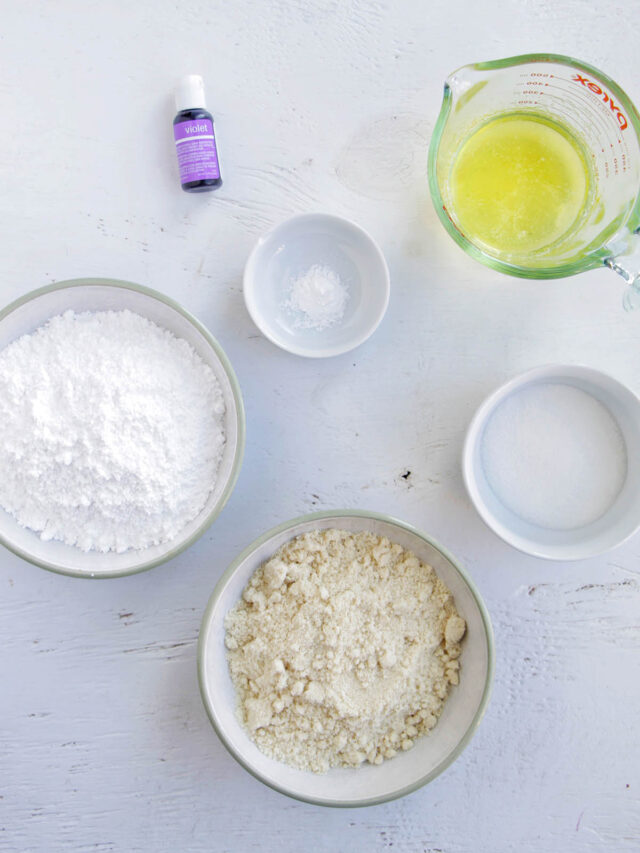
3. Always Measure Ingredients By Weight
Measuring the ingredients by weight is an absolute necessity for making macarons. You cannot get a consistent batch of macarons by measuring with volume (with measuring cups).
Measuring by weight is really the only way to get the same amount of each ingredient every single time. Kitchen scales are a very cheap investment and will definitely be necessary if you're going to continue baking macarons.
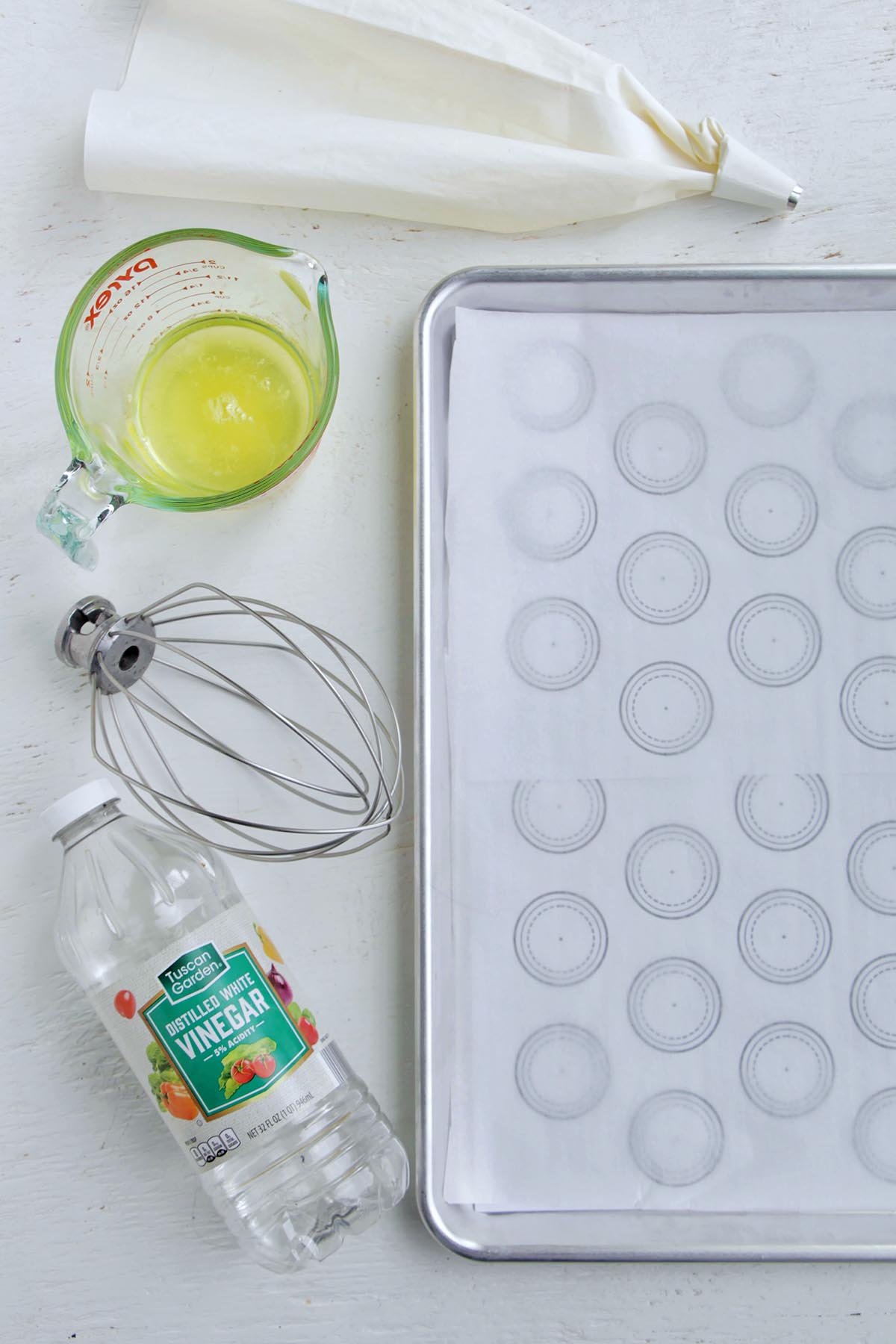
4. Always Use An Oven Thermometer
Oven temperature plays a huge role in your macarons. Even adjusting your oven temperature by 5°F (3°C) can make the difference between ruined macarons and perfect macarons.
If your oven is too hot, the macarons will crack, become brown, or develop large ruffled feet. While an oven that's too cool will result in wrinkled or indented macarons.
There's really no way to know exactly how hot your oven is getting without a thermometer. Oftentimes, the digital reader on the oven is not 100% accurate.
In addition, it takes a while when preheating the oven for it to reach the proper temperature. An oven thermometer will help you dial in the oven to the exact temperature you need.
If you're struggling with the proper oven temperature to bake your macarons, check out my oven temperature experiment to help you find the best temperature for your home oven.
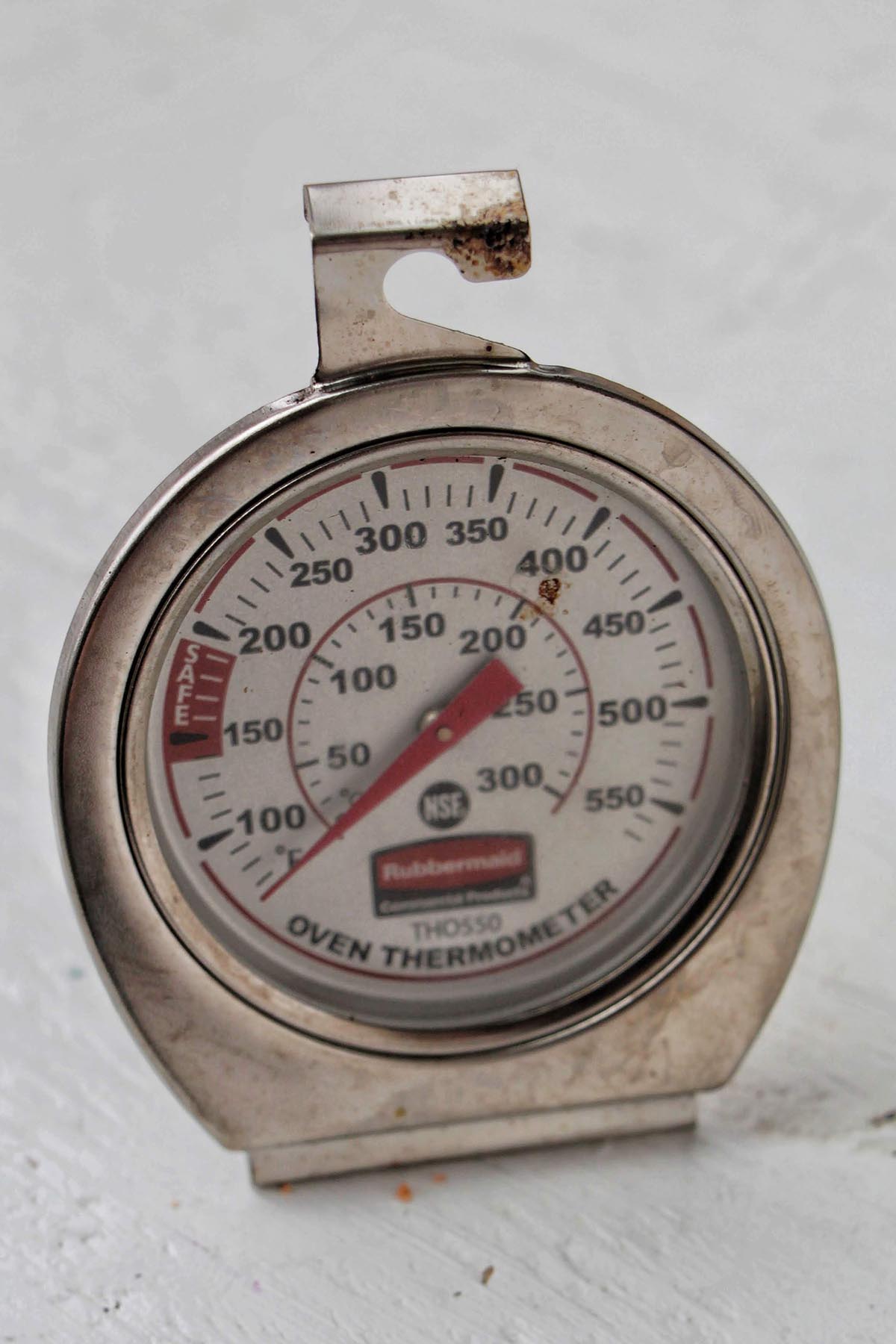
5. Play Around with Oven Temperatures
Unfortunately, due to the capabilities of home conventional ovens, you have to test the temperature to get your macaron shells perfect.
Most recipes suggest baking macarons anywhere from 275°F (135°C) – 325°F (163°F). I'd suggest starting out at 300°F (149°C) and adjusting from there.
You can always test out baking a few macarons, so you don't ruin a whole batch. Remember to always use an oven thermometer to ensure the oven is heating properly.
I should also mention, fine-tuning your oven temperature is one of the best ways to prevent hollow macarons. You can see more about how I experimented to find the best oven temperature for macarons.
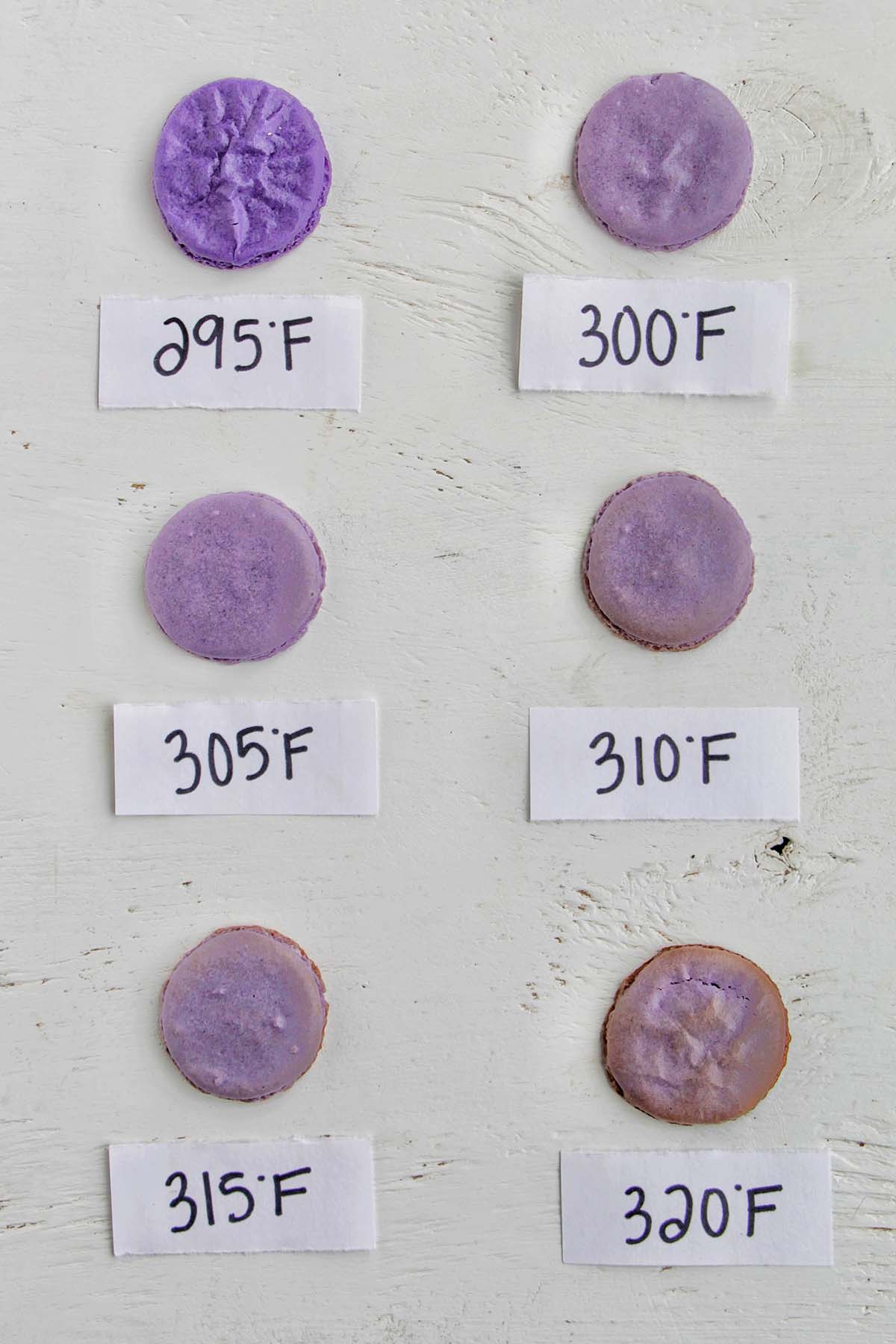
6. Make Sure There is No Oil On Your Bowls
Did you know that any fat residue or oil on your bowls or beaters will ruin the meringue? Fats interfere with the aeration of the egg whites.
Since meringue is such an integral part of macarons, you have to get this step right to make a successful macaron shell.
Plastic bowls tend to hold oil. So instead, opt instead for a glass or metal bowl.
Just to be sure there's no oil, wipe everything down with white vinegar before you begin using it. Acids are not bad for meringue. In fact, they actually help stabilize the egg whites.
You can learn more about the various types of meringue and the science behind making meringue.
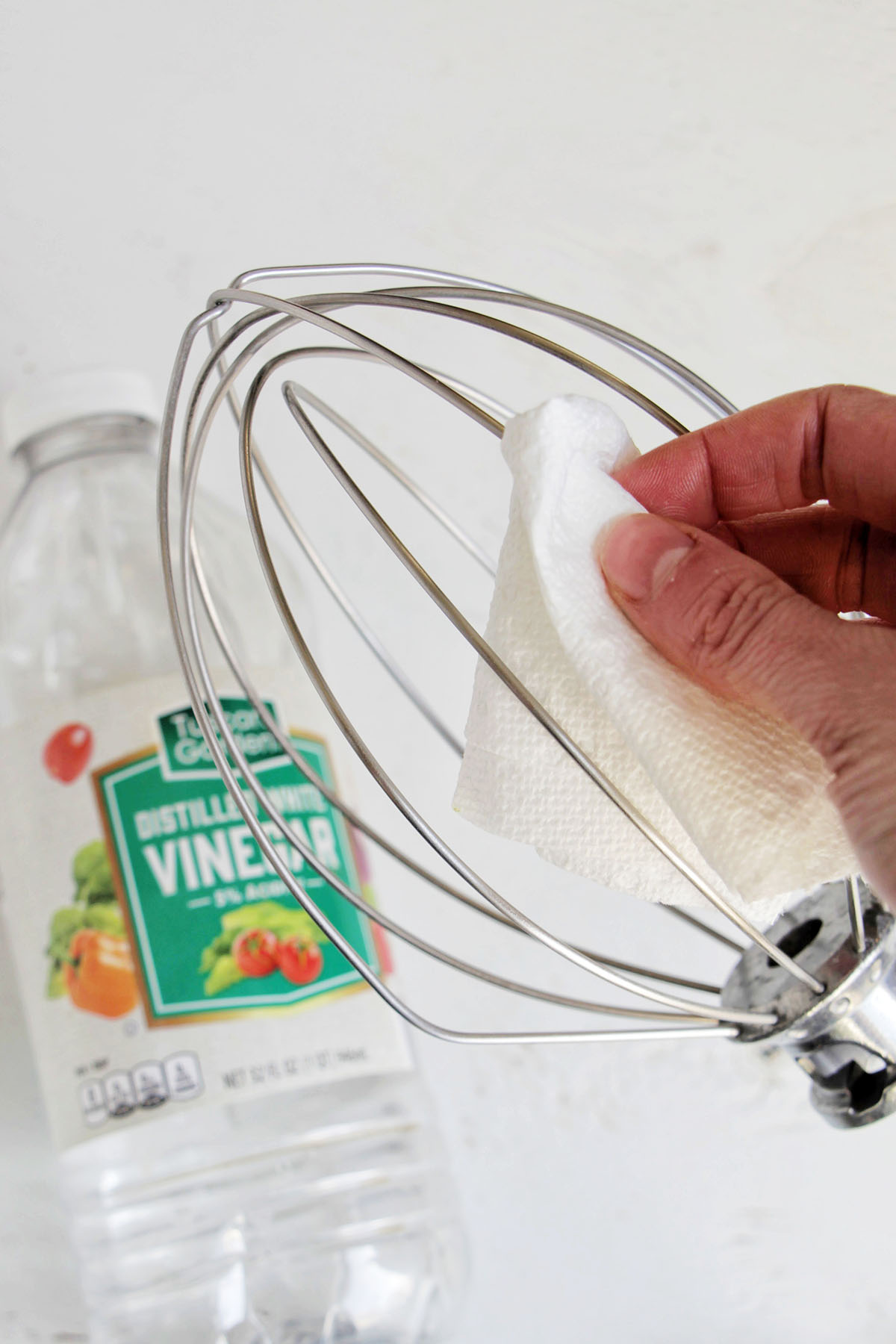
7. Sift the Almond Flour & Confectioners' Sugar
The key to smooth macarons is sifting the almond flour and confectioners' sugar. Without this, you'll get lumpy macarons with raised dots on top instead of a nice, smooth shell.
Some people like to sift the mixture two to three times to ensure a smooth finished product. You'll need a fine mesh stainer for this process.
If you need help pushing the almond flour and confectioners' sugar through the mesh strainer, you can use a silicone spatula to help push it through.
Just don't force big lumps through the mesh strainer. Those are the pieces we are trying to weed out during this process. Any large pieces should go in the trash.
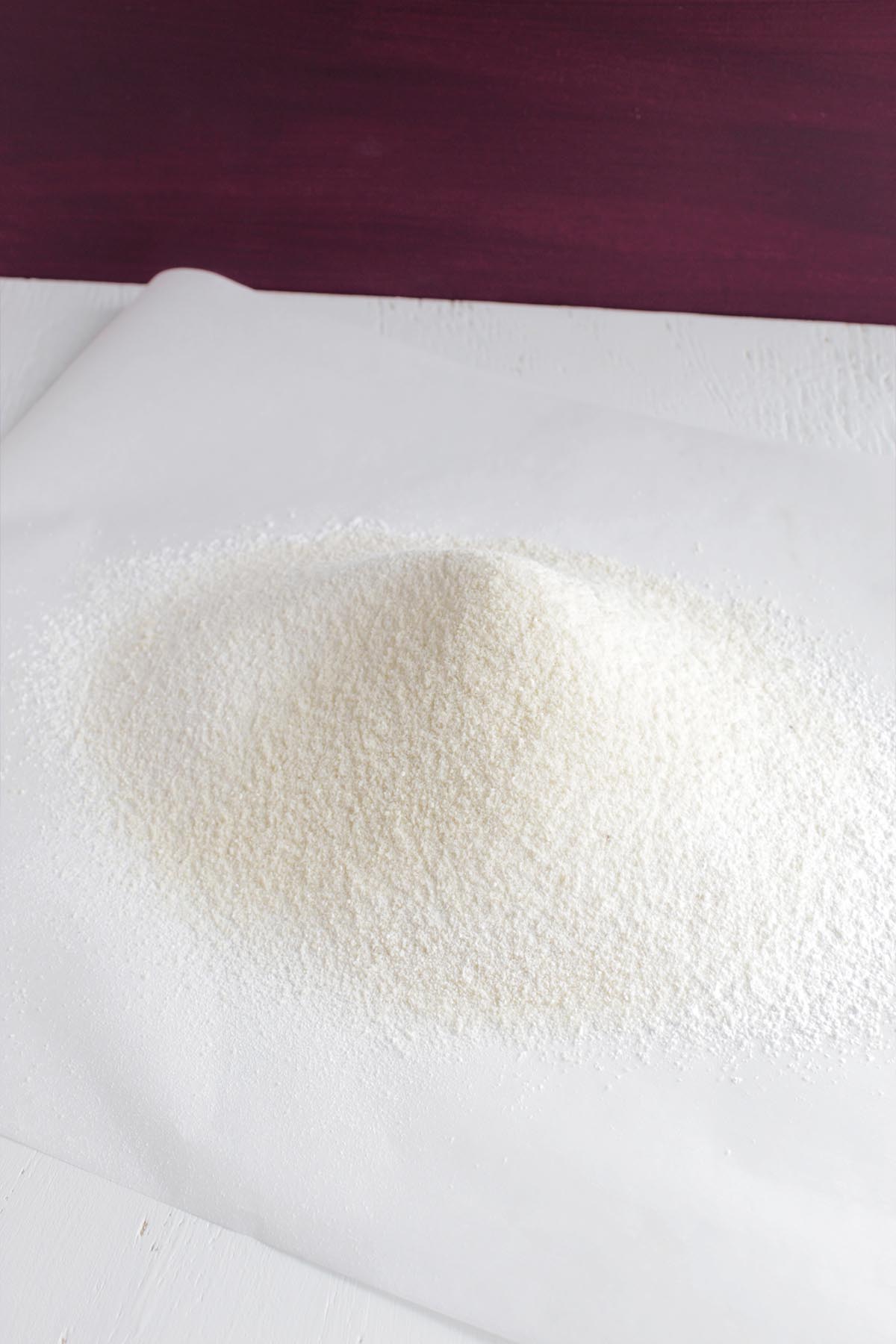
8. Set Yourself Up for a Successful Meringue
In order to make a successful meringue, make sure to start out with room-temperature eggs.
Egg whites foam best at room temperature (around 70°F - 80°F). Be sure to take the egg whites out of the refrigerator, and allow them to come to room temperature before making meringue.
Also, make sure you add cream of tartar to the egg whites before you begin beating the mixture.
Cream of tartar helps stabilize the egg whites. You'll need 2 teaspoons (10 grams) of cream of tartar for every 1 pound (480 grams) of egg whites.
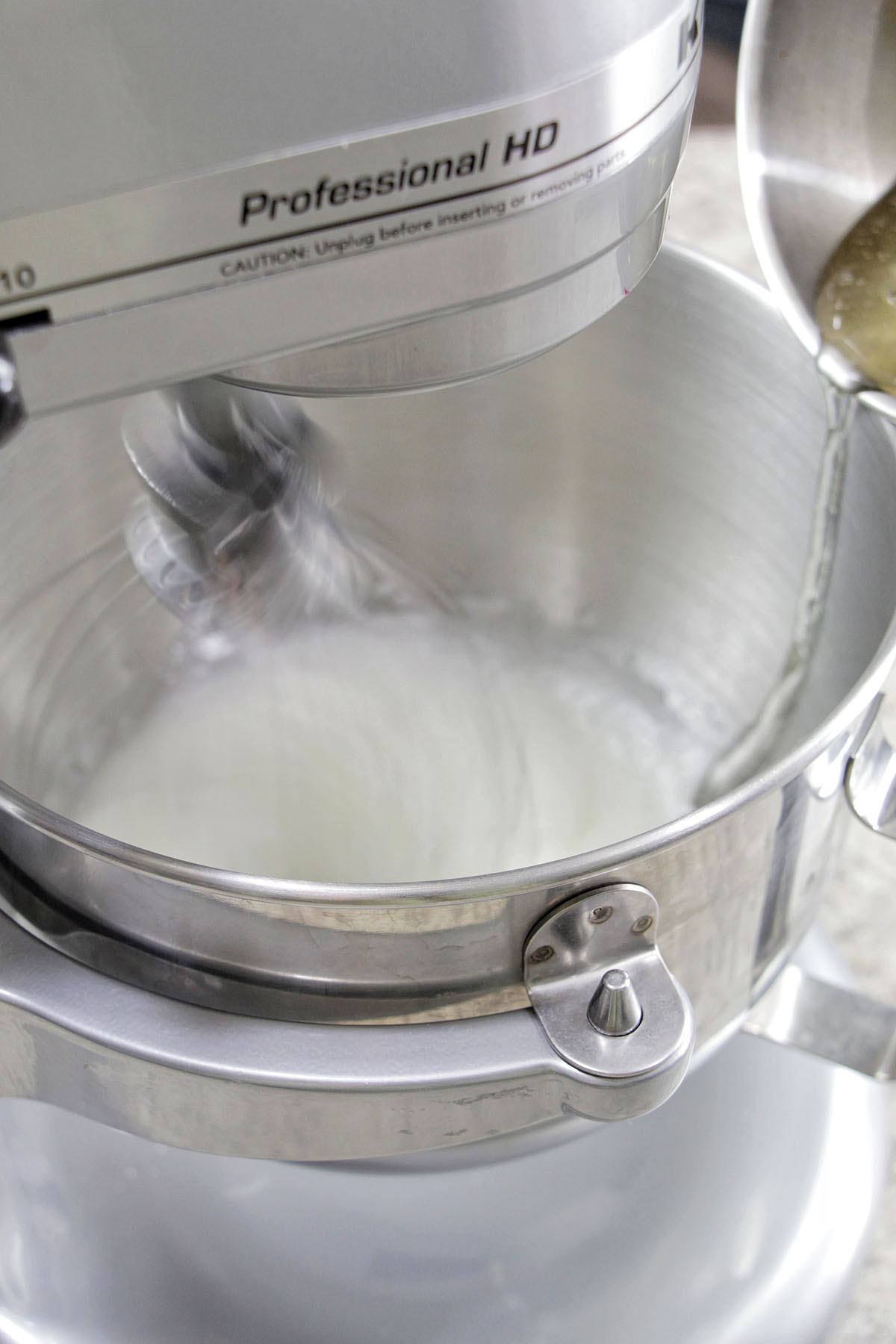
9. Always Get to Stiff Peaks
You'll notice many problems with macarons that come from under-whipped meringue (cracks, soft shells, hollows) as well as from over-whipped meringue (ruffled feet, hollows). That's why it's so important to achieve stiff peaks when making meringue.
If you're a visual learner, you can check out this video for an example of French meringue stiff peaks. There are also some indicators that you can look for to know you've reached stiff peaks:
- You'll notice the meringue starts to ball up inside the whisk while it's mixing.
- Pull the whisk out of the mixer. A stiff peak should stand straight up (no curl at the tip).
- You can see pointy off-shoots of egg whites on the whisk when you pull it out of the mixer.
- You can fully flip the bowl over and nothing moves or falls out.
- The meringue feels sturdy (not flimsy). You can use your whisk attachment to stir the meringue and see how sturdy it feels.
- The egg whites hold the indentation that the whisk makes as it's whipping.
No matter what type of meringue you make (French, Italian, or Swiss), you're always looking for stiff peaks.
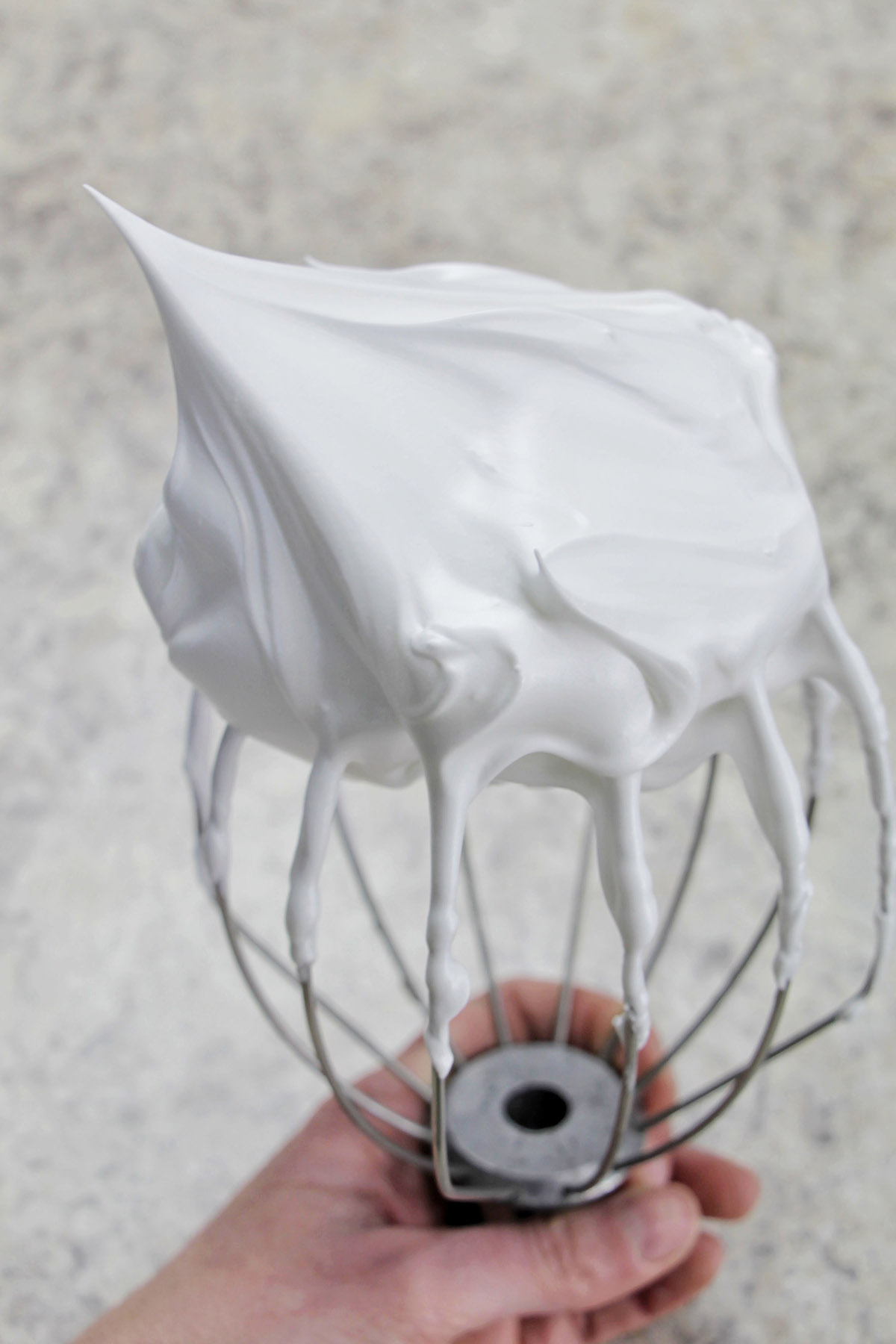
10. Don't Over Macaronage
Macaronage is a term that refers to folding the dry macaron ingredients (almond flour and confectioners' sugar) into the meringue. This process smooths the mixture and helps the macarons bake with proper structure.
During this stage, we're looking for a lava-like consistency.
You can test this by lifting your spatula and seeing if the batter drops almost like lava. Once it drops off the spatula, the batter that was dripped should fade back into the batter within 10 - 15 seconds (not immediately).
There's really not a set time for how long you need to macaronage. It all depends on the recipe, your specific ingredients and environment, and even the amount of batter you are baking. It's all about the feel of the batter.
When in doubt, it's better to under macaronage by a little since the batter will continue to be worked in the piping bag.
You can take a look at these French macarons for a visual example of perfectly macaronaged batter versus under or over macaronaged batter.
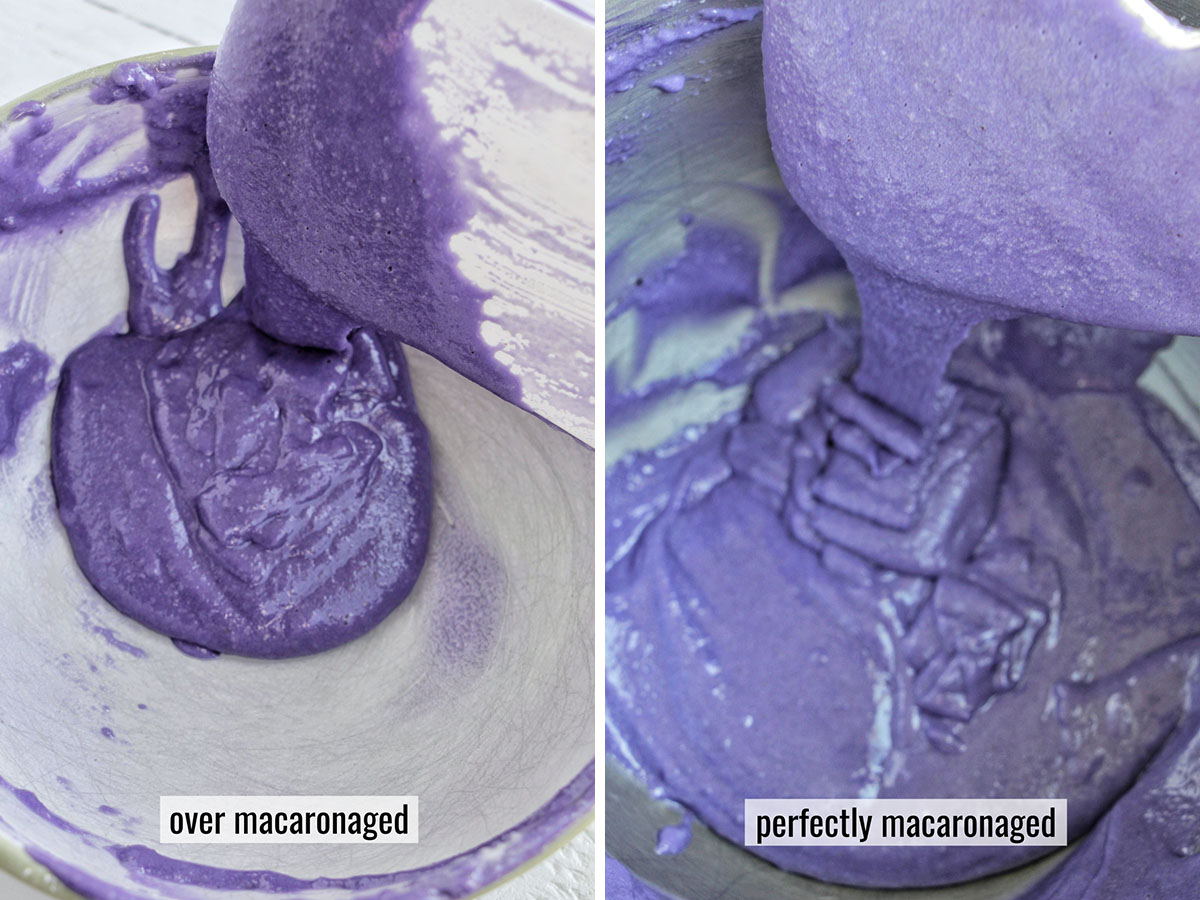
11. Always Use Gel or Powdered Coloring
In order to color or dye your macarons, you'll want to use gel food coloring or powdered coloring. The liquid-based food coloring will not work as it will add too much liquid and cause your batter to be the incorrect consistency.
When you're adding gel food color to your macaron mix, be sure to do so slowly. Too much food coloring can cause your macaron batter to have problems later.
Only add a few drops of coloring at a time until the desired color is reached.
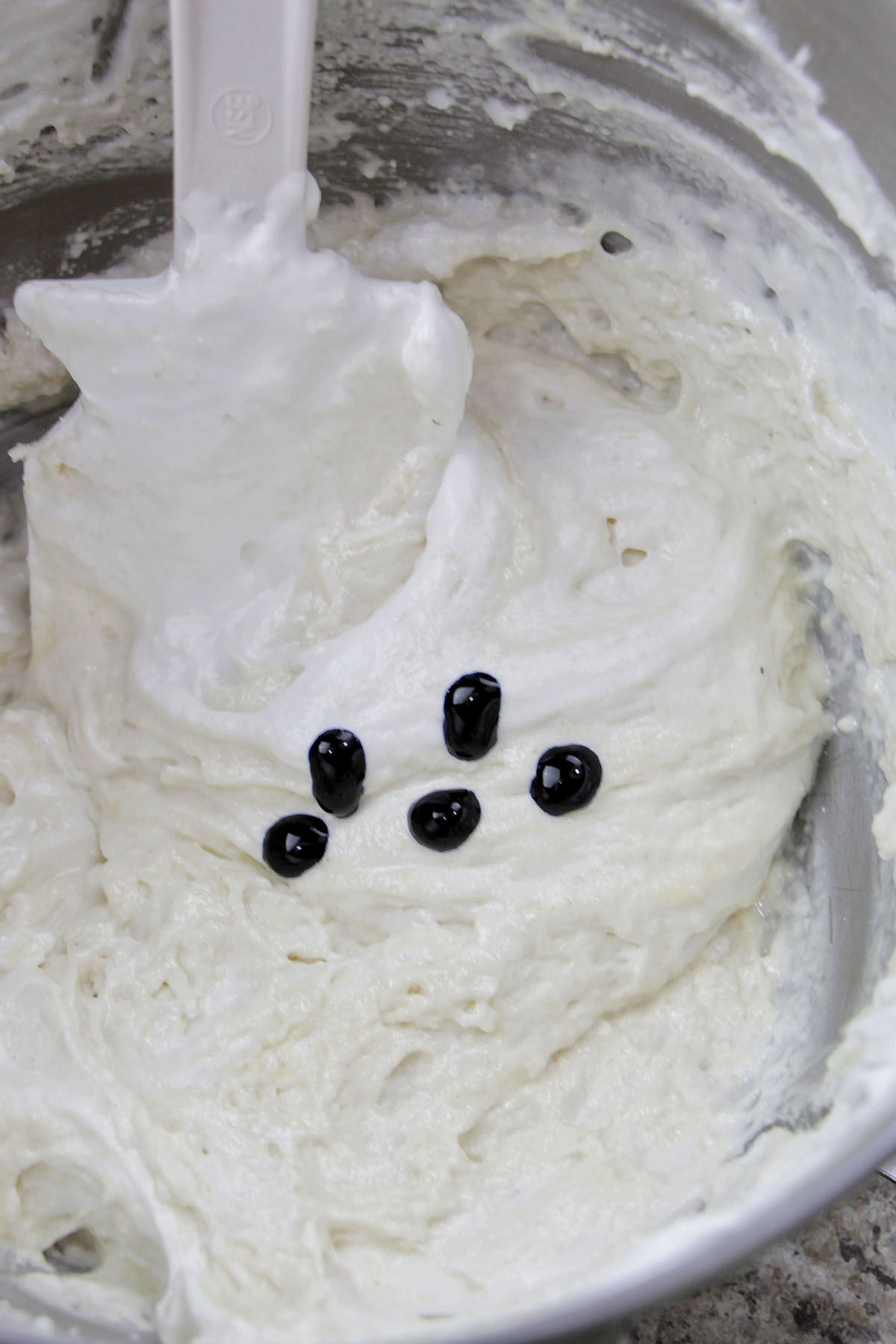
12. Remember to Release Any Air Bubbles
Air bubbles can form in the macaron shells simply from the mixing and piping process. It's completely normal.
However, the air bubbles can also cause the macaron shells to crack during the baking process.
To prevent this, firmly bang the sheet pans on the counter to remove any air bubbles. Don't worry, you won't damage the macarons by doing this!
Slamming the pans on the counter allows the excess air to rise to the top of the macarons. With a toothpick, pop any air bubbles that have risen to the top of the macarons.
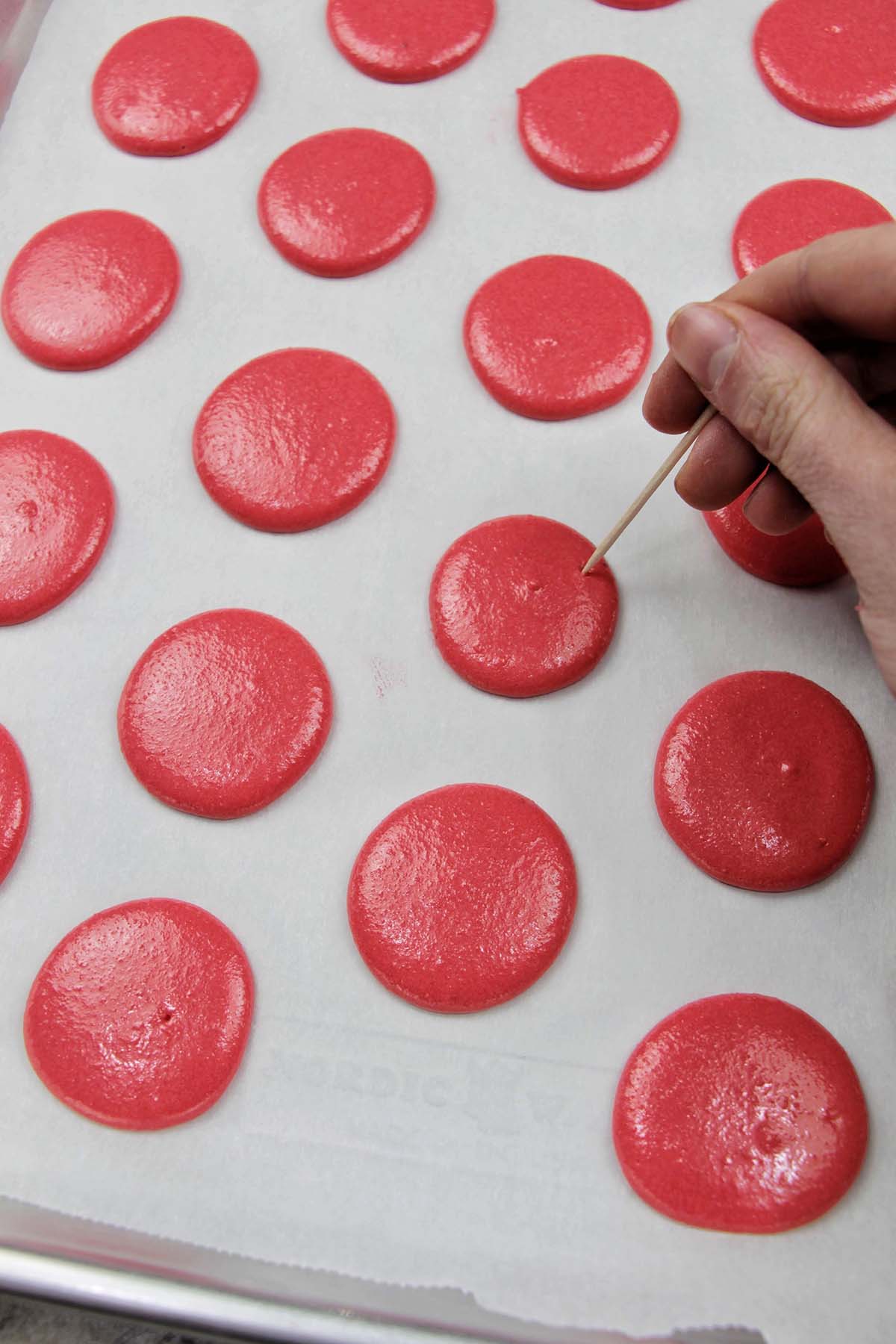
13. Always Allow the Macarons to Rest
It's important to allow your macarons to rest on the counter until they've formed a skin.
Typically, you'll need to allow the shells to rest for about 45 - 60+ minutes on the counter until a skin has formed on top. If you live in a humid climate, this may take up to 90+ minutes.
To test that the macarons are ready to bake, you can feel the shells and visually inspect the macarons. Here's what to look for:
- The shells appear matte in color (not shiny like when you first piped them).
- They are dry to the touch. You should be able to run your finger along the top of the shell without making an indent.
- When you gently and lightly push down on the macaron shell, you can feel some resistance and no mark is left.
If you live in a humid climate, it's very likely you're not resting the macaron shells long enough. Try running the air conditioning or a dehumidifier in your kitchen to take some of the moisture out of the air.
If you're having trouble with this, check out my tips for how to fix macarons that aren't drying.
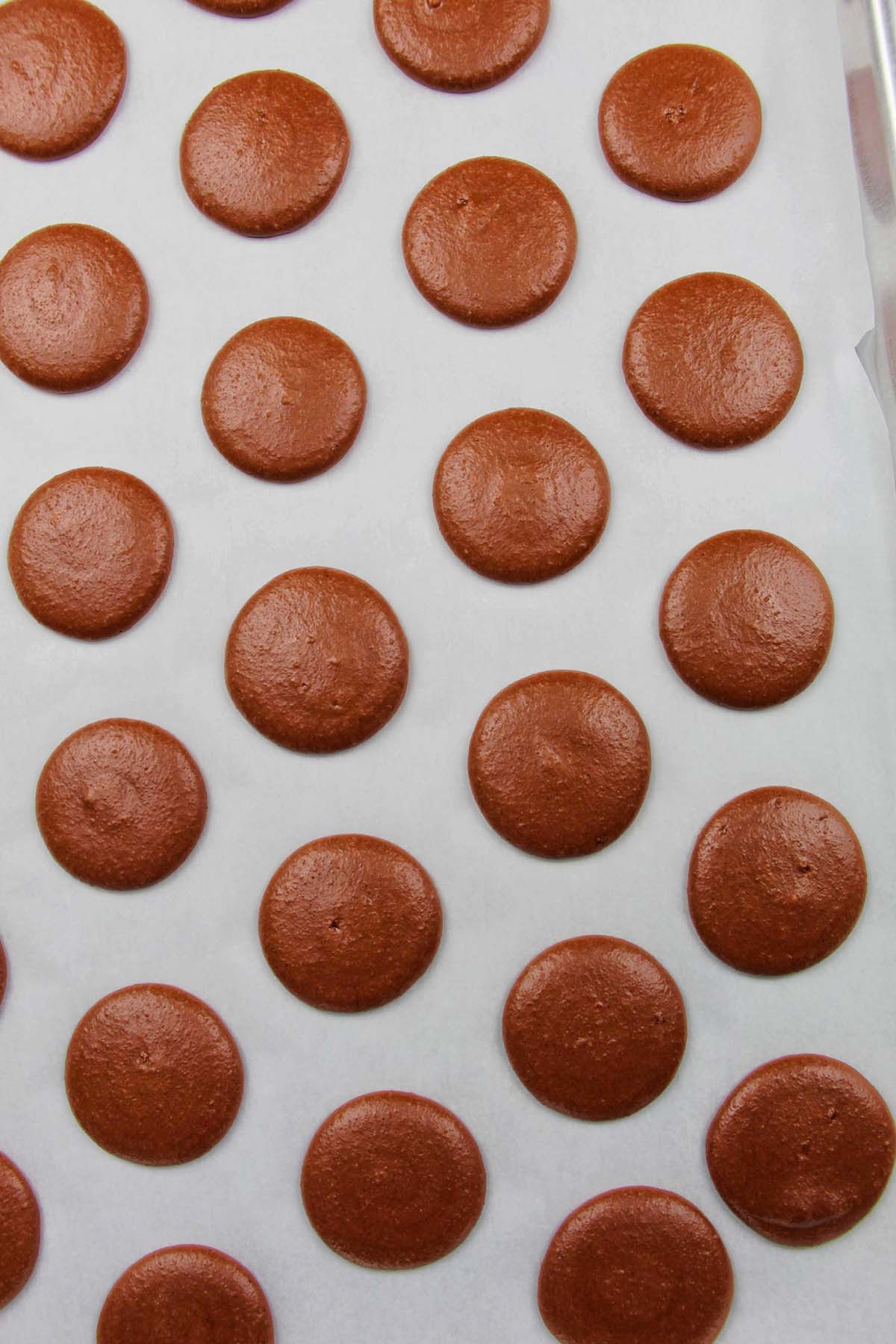
14. Test Out Parchment Paper vs. Silicone Mats
Both of these tools help to ensure even heat distribution. Play around to see which one you prefer.
You will get different results with each of the products, so test them out and see what gets you the most consistent results with your oven.
Personally, I've found that parchment paper gets me the most consistent results in my personal home oven.
If you use parchment paper, you'll also want a macaron template to help you make the perfect-sized macarons every time! You can grab my free printable macaron template.
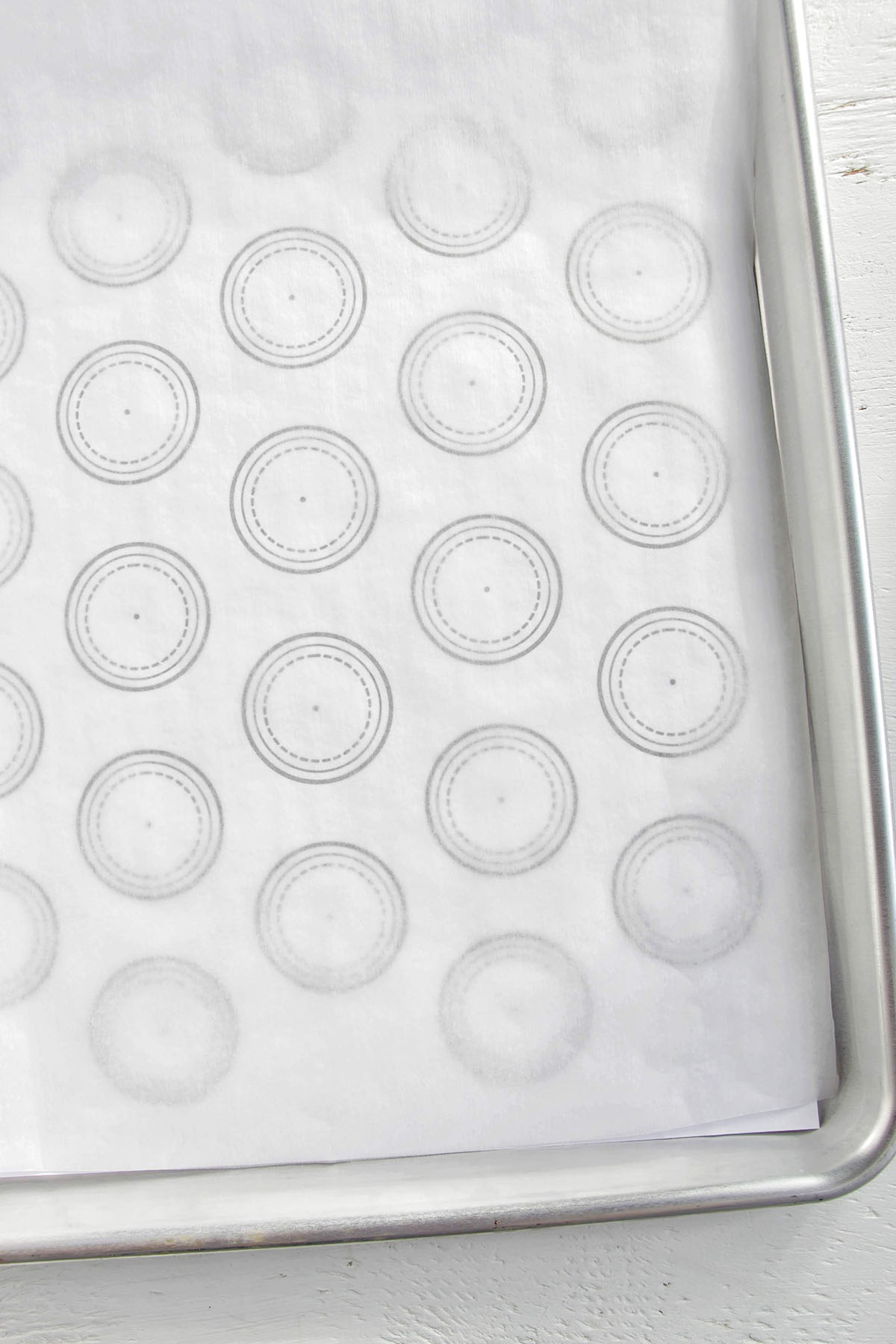
15. Allow the Macarons to Sit Before Eating
It's best to allow your macarons to sit in the fridge overnight with the filling. This allows the macaron to slightly soften and develop a deeper flavor. In some cases, allowing the macarons to sit will even slightly help with hollow shells.
The only exception to this rule is if you are filling the macarons completely with curd, jam, or marmalade.
If you're not going to eat them right away, you can also store the macarons in the freezer for up to a month if they're filled with buttercream or ganache. Learn more about how to properly store macarons for more detailed instructions.
If you're looking for an easy filling for your macarons, try this vanilla buttercream recipe or an easy five ingredient chocolate ganache filling.
Macaron Troubleshooting Tips
If your recent batch of macarons turned out incorrectly and had small feet, cracked tops, or even hollow shells, try these troubleshooting steps to help you remedy the specific problem you're having.
Here are a few common causes of flat macarons:
1. The oven is too hot or too cold: If your oven is too low, you'll notice that the macarons won't properly rise. Not only will they be flatter than a normal macaron, but the feet will be short (under 2 millimeters), and the tops will likely be wrinkly or indented.
On the other hand, if your oven is too hot, the shells will be flat because proper feet will not form. The macarons will bake too quickly on the outside, leaving a moist interior that doesn't properly rise.
2. You under whipped the meringue: You didn't whip your meringue to stiff peaks. Under whipped meringue won't be strong enough to properly rise in the oven. It can lead to flat, wrinkled, or weak macaron tops.
3. You over macaronaged your batter: Another common issue that results in flat macarons is over macaronaged batter. Macaronage is a term that refers to folding the dry macaron ingredients (almond flour and confectioners' sugar) into the meringue. This process smooths the mixture and helps the macarons bake with proper structure.
When you over macaronage, you'll notice the batter is very thin and easily falls off the spatula. You'll also notice that the batter spreads really easily when piped. It might even fall out of your piping bag when transferring from one circle to the next on your piping template.
If you're still having trouble, check out my troubleshooting guide for flat macarons.
1. Your oven is too hot: Most likely, cracked macarons are related to oven temperatures that are too hot. To fix this issue, you'll first want to purchase an oven thermometer.
This inexpensive cooking tool will allow you to see if your oven is heating to the temperature you're setting it to. Oftentimes, home ovens are known for heating hotter or colder than you set the temperature to.
2. Your meringue is under or over whipped: Both under-whipped and over-whipped meringue can result in cracked shells. This is because the meringue needs to have the proper structure in order to rise in the oven.
Weak meringue will not be strong enough to withstand the heat of the oven when baked, causing a cracked top. Alternatively, meringue that has been over-whipped won't have enough air incorporated to properly expand in the oven.
3. You didn't rest your macarons long enough: It's important to allow your macarons to rest on the counter until they've formed a skin.
Typically, you'll need to allow the shells to rest for about 45 - 60+ minutes on the counter until a skin has formed on top. If you live in a humid climate, this may take up to 90+ minutes.
4. You have air bubbles in the macarons: Did you put your macarons in the oven without banging them on the counter? Oftentimes, air bubbles are trapped in the macaron batter. Air bubbles occur naturally in the batter during the macaronage and piping process.
In order to avoid cracked macaron shells, you need to release and pop these air bubbles; otherwise, they will burst in the oven and ruin the shells.
If you're still having trouble, check out my troubleshooting guide for cracked macarons.
Here are a few common causes of wrinkled macaron shells:
1. Your oven temperature is too low: To remedy this, you'll first need to purchase an oven thermometer and place it in the center rack of your oven to double-check the temperature reading before baking the macarons.
Next, you'll need to play around with your temperature settings. I usually recommend heating your oven to 300°F (150°C) and adjusting from there. Pipe a set of 4 - 6 macarons on a baking sheet and test just a few macarons at a time (so you don't ruin a whole batch).
2. You over or under whipped the meringue: One of the most important techniques to learn, especially when making macarons, is how to whip egg whites to stiff peaks.
Egg whites that are under whipped or over whipped can result in wrinkled shells, weak tops, and macarons that will not properly rise.
3. You over macaronaged the batter: Another common issue related to wrinkly macaron shells is over macaronaging.
Macaronage is a term that refers to folding the dry macaron ingredients (almond flour and confectioners' sugar) into the meringue. This process smooths the mixture and helps the macarons bake with proper structure.
To properly macaronage, you should fold the batter until it reaches a lava-like consistency. You can test this by lifting your spatula and seeing if the batter drops almost like lava. Once it drops off the spatula, the batter that was dripped should fade back into the batter within 10 - 15 seconds.
If you're still having trouble, check out my troubleshooting guide for wrinkly macarons.
Here are a few common causes of weak/soft macaron shells:
1. Your meringue is under whipped. French meringue needs to be properly beaten in order to form a strong macaron. Make sure that you're beating the meringue to stiff peaks.
To test the meringue stiffness, pull the whisk out. A stiff peak should stand straight up (no curl at the tip). Signs that you're ready to test the stiffness include seeing lines left from the beaters in your eggs. In addition, the meringue starts to almost ball up inside the whisk attachment. You'll also know it's ready because you can fully flip the bowl over and nothing moves or falls out.
2. The macaron shells are underbaked. If you don't give your macaron shells enough time to bake in the oven, a sturdy outside will never develop. Make sure to check that the macarons are done before pulling them out of the oven. If you touch the shell and it wiggles or is still sticky/wet, you know they need to bake longer.
Here are a few common causes of small feet, no feet, or feet that have ruffled/spread too far:
1. Your oven temperature is too high or too low: Work on dialing in your oven temperature. You may have to try a few different oven temperatures in order to find the perfect temperature for your home oven. You can read more about my experiments with oven temperature if you're curious to learn more.
2. You didn't rest the macarons long enough: Typically, you'll need to allow the shells to rest for about 45 - 60+ minutes on the counter until a skin has formed on top. If you live in a humid climate, this may take up to 90+ minutes.
3. You over or under macaronaged the batter: If you've over macaronaged your batter, it will be too thin and runny. This will cause your macarons to fall flat with small feet or even no feet. An overworked batter can also cause the macarons to spread out horizontally, rather than rising up vertically.
If you're still having trouble, check out my troubleshooting guide for macaron feet.
Here are a few common causes of browned macarons:
1. Your oven is too hot: To fix this, make sure you have an oven thermometer to measure the exact temperature of your oven, then place it in the center rack of your oven for a proper reading. Try lowering the oven temperature by 5°F (3°C) at a time.
2. The macarons are baking too long: Turn on your oven light (but don't open the oven door) to keep an eye on the macarons while they're baking. You'll know the macarons are done backing because the feet and the edge of the macarons feel firm when you gently touch them.
Here are a few common causes of hollow macaron shells:
This is the last troubleshooting problem you should worry about. Before perfecting your macarons so they don't have hollows, make sure all the other properties are correct:
1. The meringue is over and under whipped: In order to prevent hollows, you need the perfect consistency of meringue before starting the macaronage process. Oftentimes, adding in acid, like cream of tartar, can help stabilize your meringue and allow more time for the air to get incorporated.
2. The batter was over or under macaronaged: The macaronage stage, which refers to working your batter to the proper consistency, is a technique that takes a while to master. If you've worked the batter to a lava-like consistency and you're still getting hollow shells, try working it a tad less.
3. Your oven temperature is too high or low: Oven temperature plays a big role in hollow macarons. Unfortunately, due to the capabilities of home conventional ovens, you have to test and play around with the temperature to get your macaron shells perfect. Most recipes suggest baking macarons anywhere from 275°F (135°C) - 325°F (163°C). Test these temperature ranges out with your home oven and an oven thermometer to see what works best.
If you're still having trouble, check out my troubleshooting guide for hollow macarons.
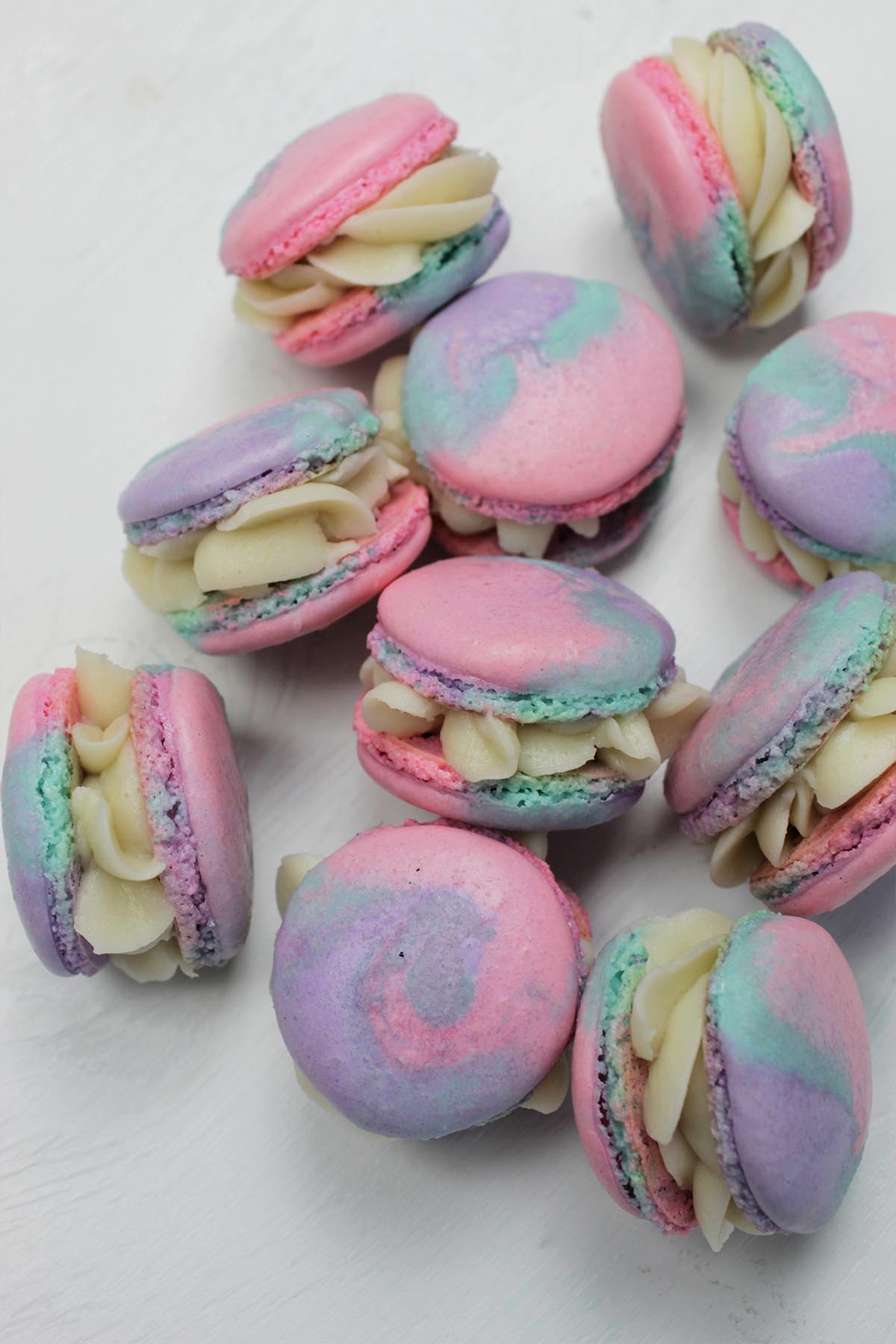
Macaron Recipes
Enjoy baking up macarons? Check out my favorite macaron recipes, including 30+ of the best macaron recipes. Or, if you want to create your own recipe, learn how to flavor macarons.
Love this guide? Please leave a comment below. Don't forget to follow along on Instagram, Facebook, YouTube, and Pinterest for more recipes.

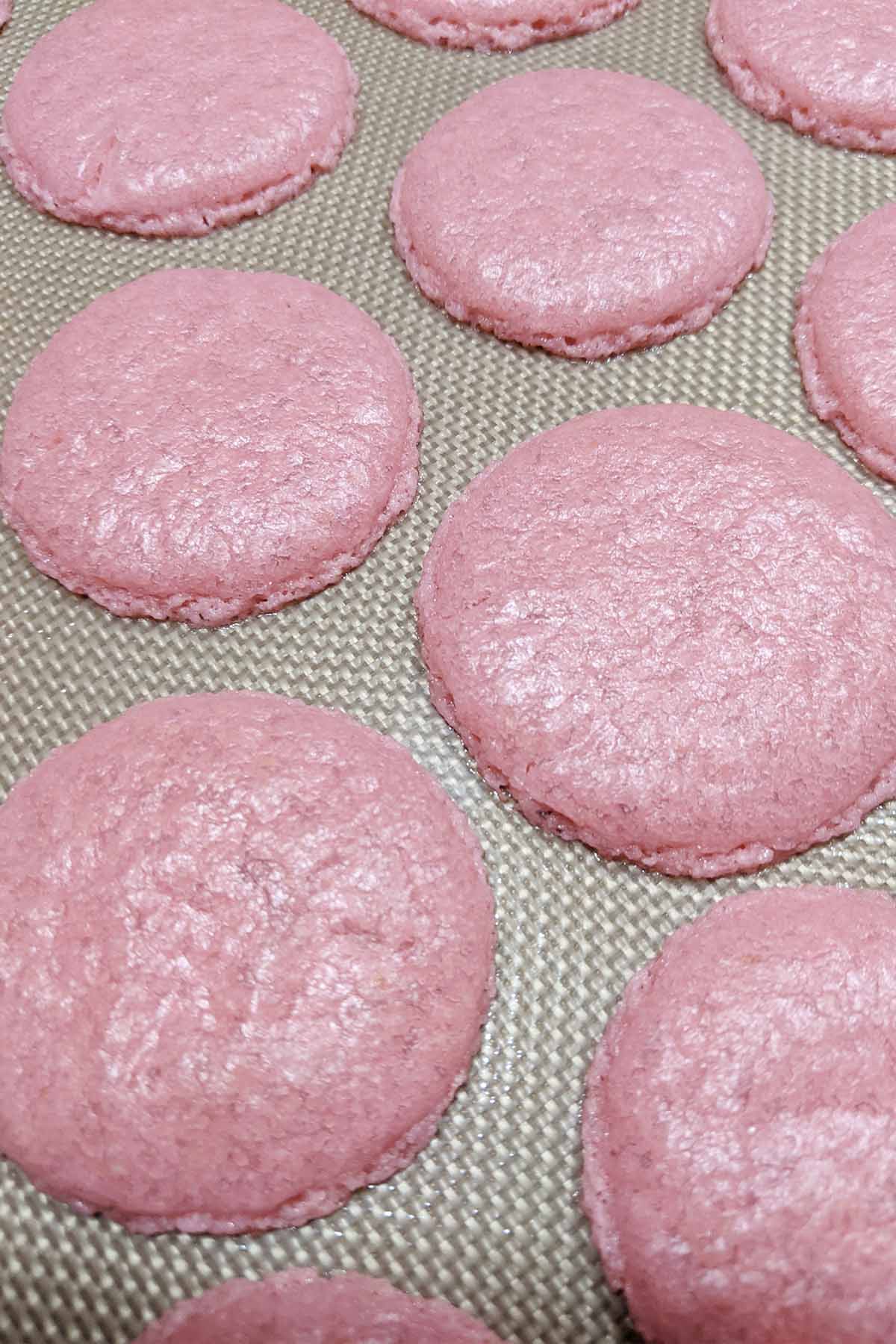
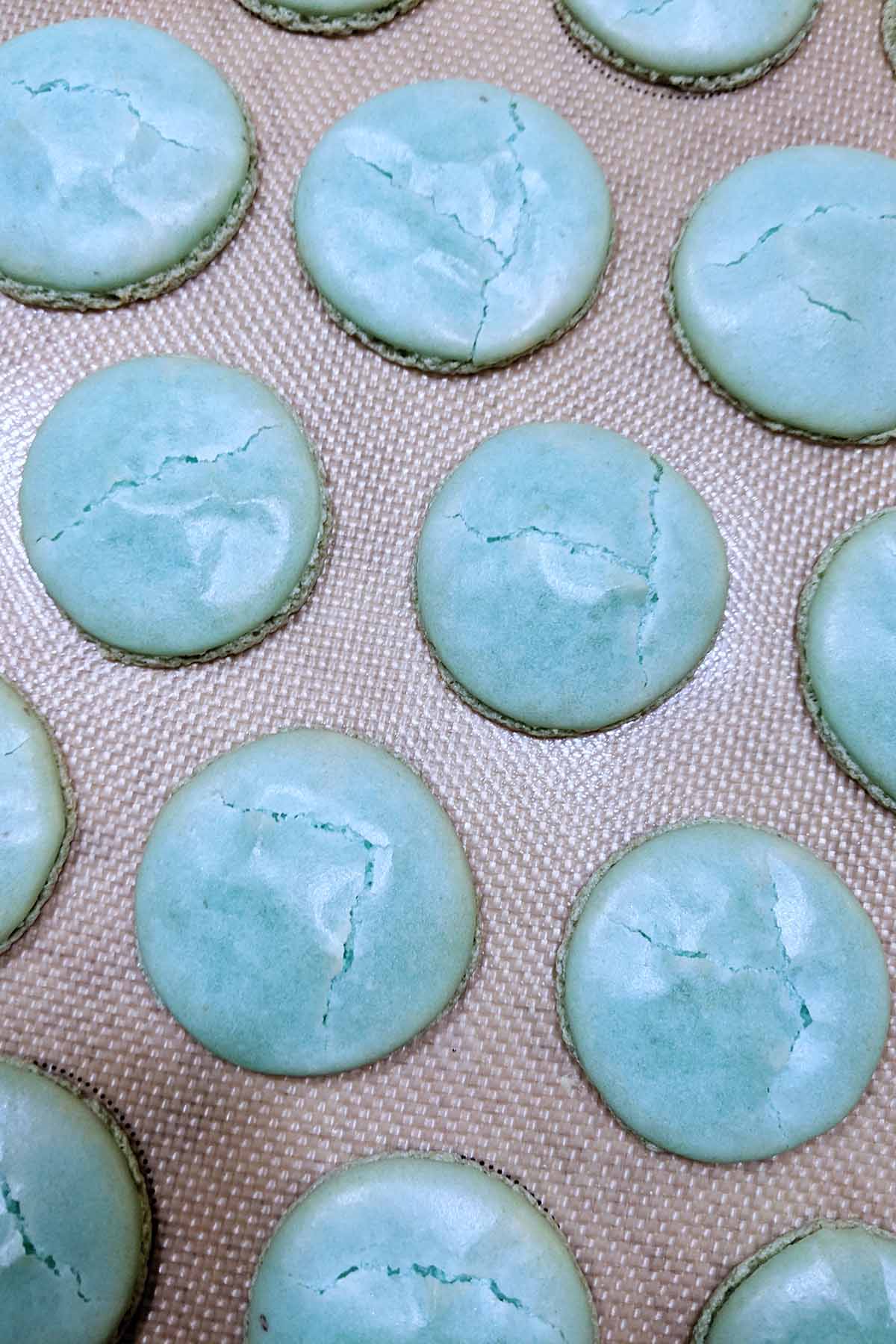
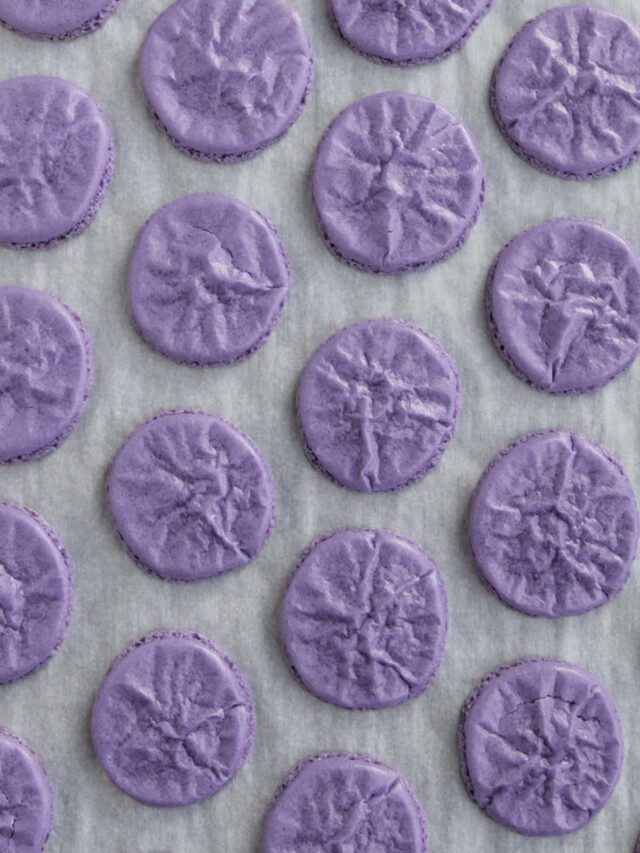
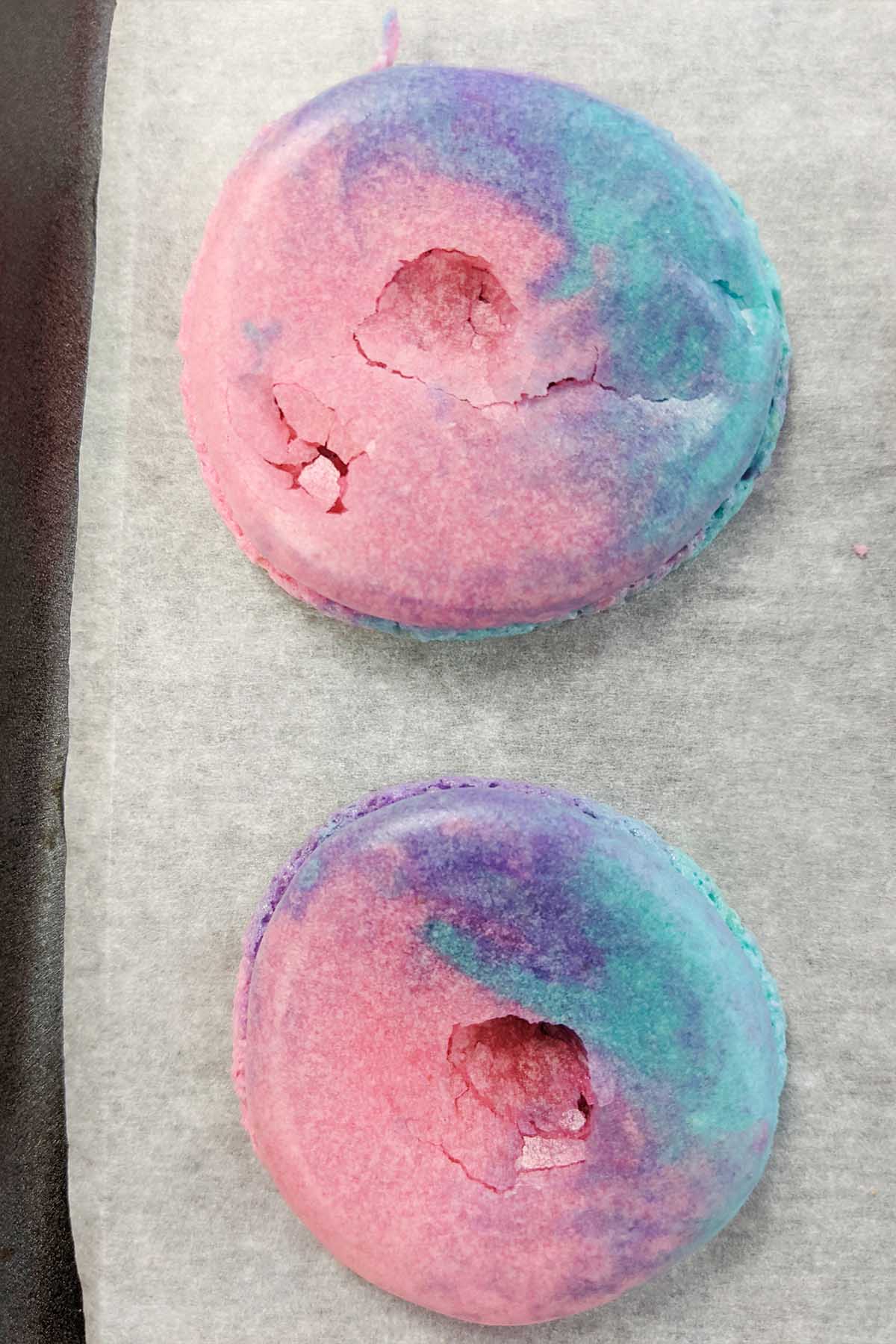
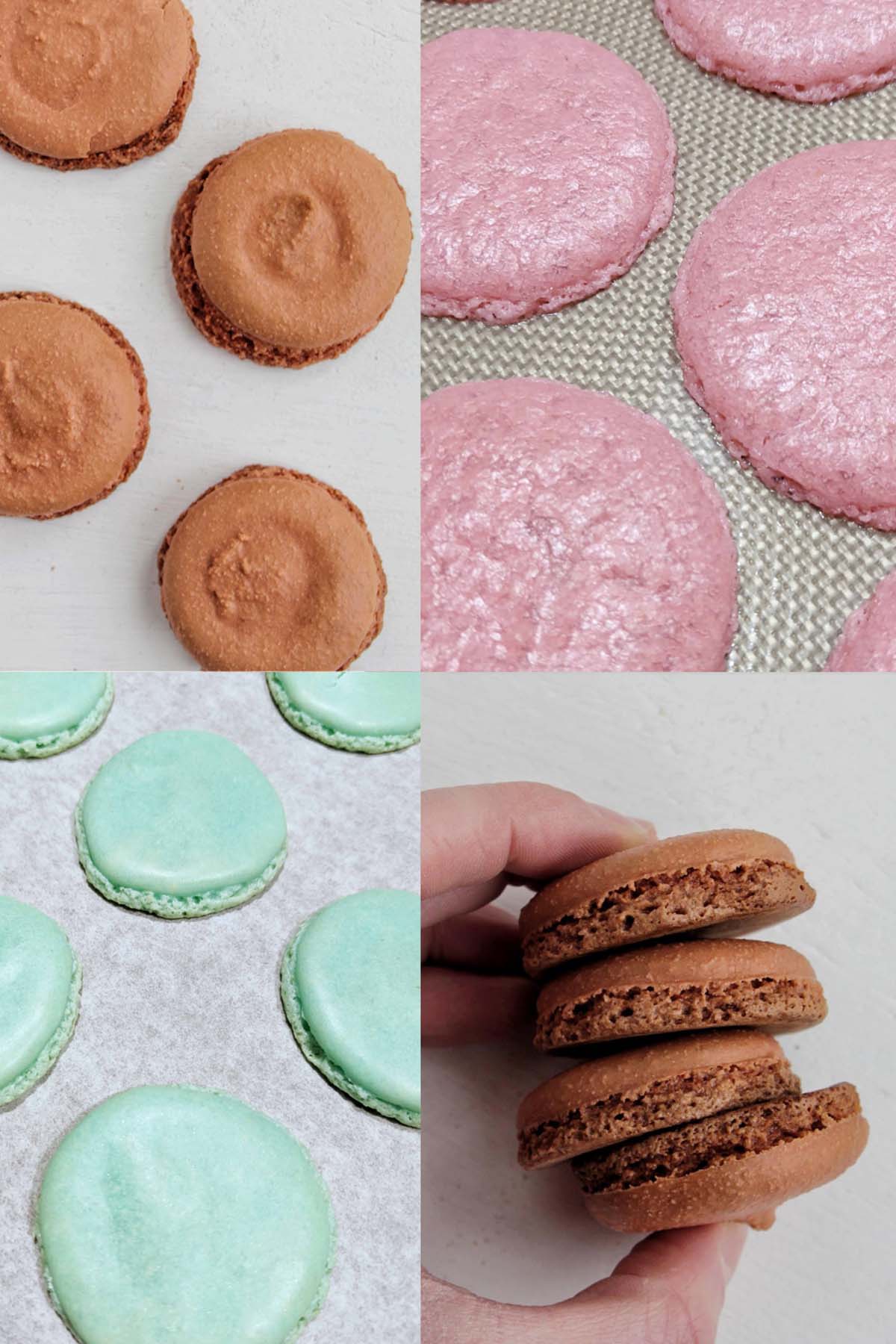
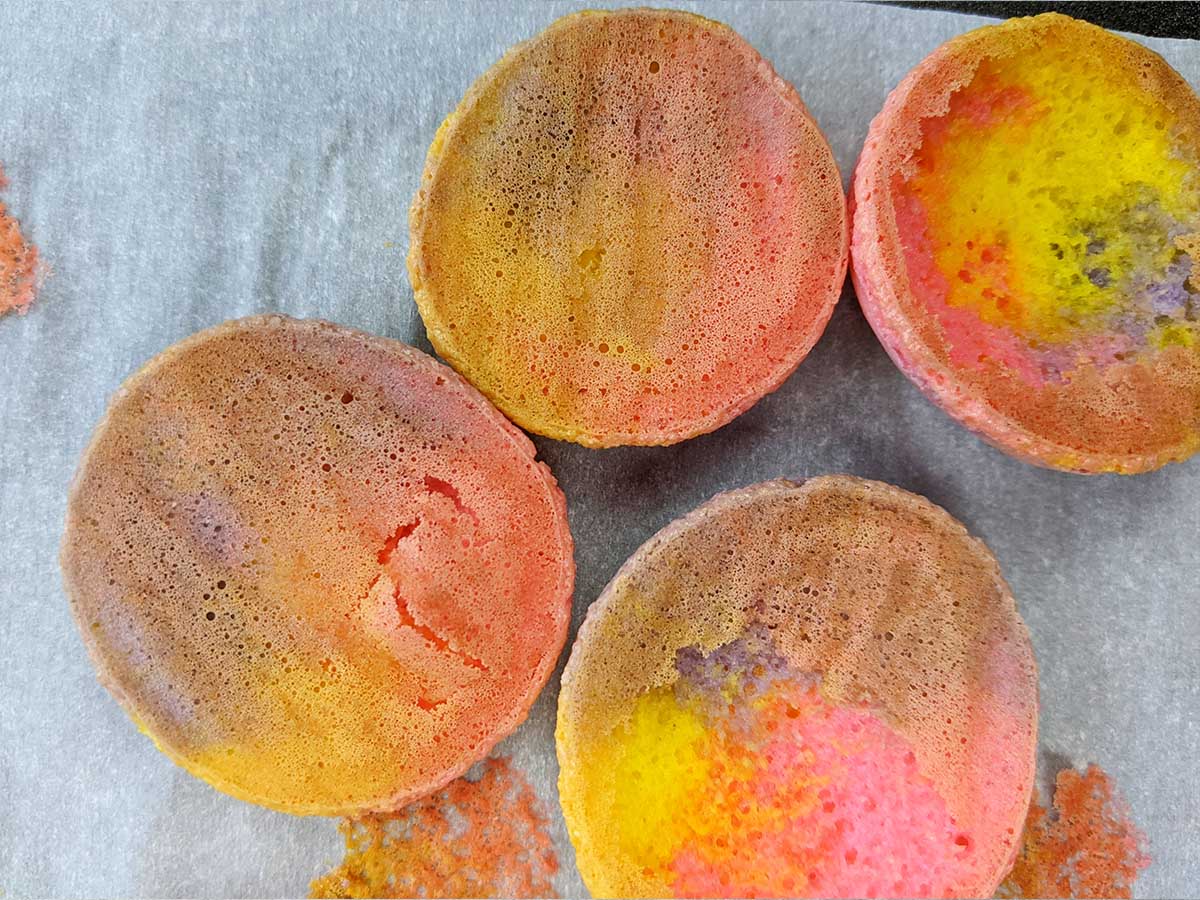
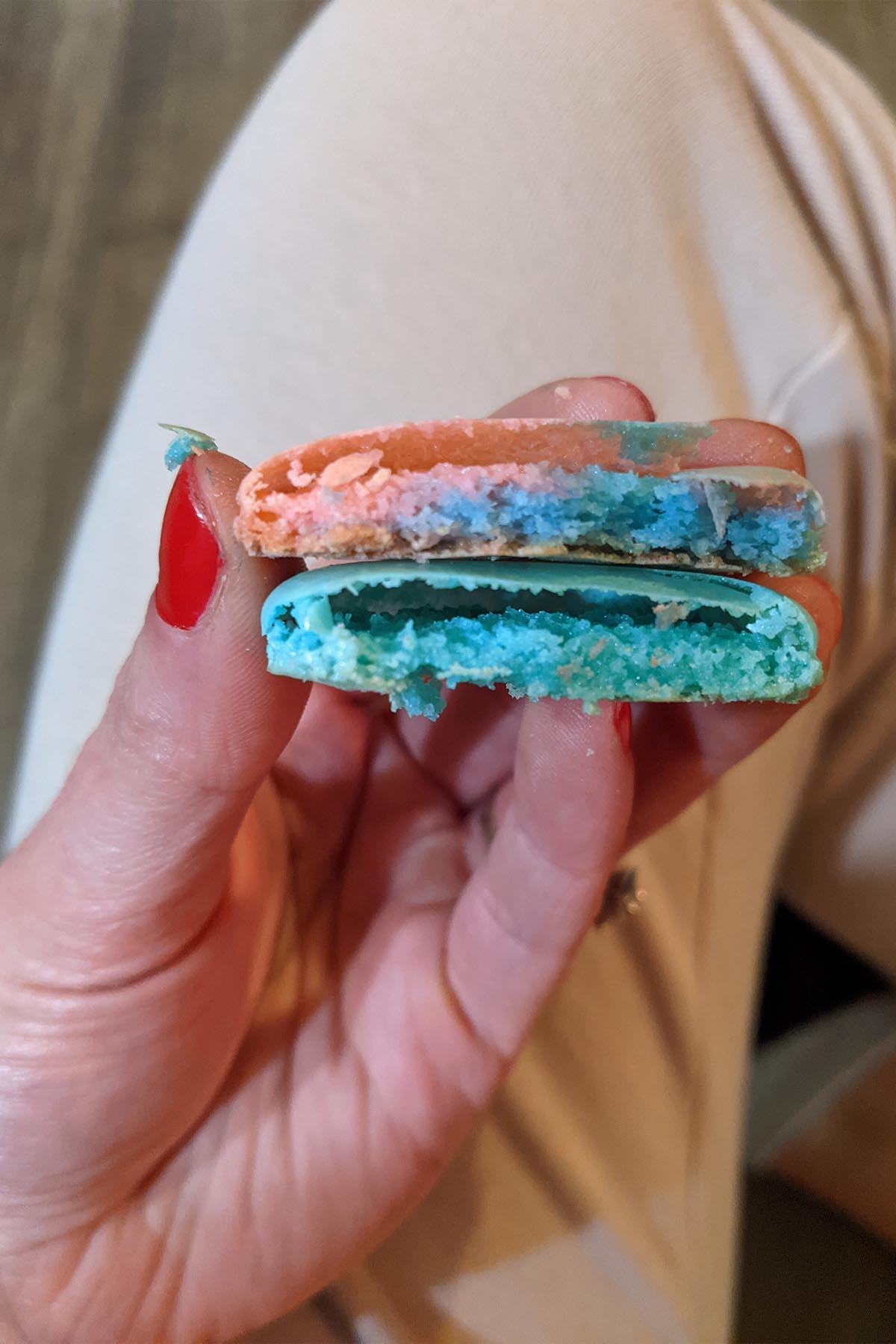









Hatti
So I finally mastered macarons and have rented space in a bakery to sell them at a farmers market. My problem is, all of a sudden I can’t figure out what the heck is going wrong! They are lopsided and/or cracked. I’ve changed the temp higher and lower, left them to rest for longer or shorter amounts of time, made sure I wasn’t under or over whipping the merengue, making sure I wasn’t over or under mixing, used different pans, turned the pans upside down. I just can’t get to the bottom of it. Any change I’ve made has resulted in the exact same thing. I think that’s what’s so baffling. I usually can see a difference when I do something a little different, but not this time. Lord help me!
Jessica Mode
Hatti - Ugh I'm so sorry!! I feel your pain with this! Every new environment seems like a new challenge to get the macarons to behave. Are you using a convection oven in the bakery instead of your normal conventional oven at home? That could be causing the lopsided macs. I'm not an expert at using convection ovens, but I'm sure there are resources out there with tips!
As for the cracking problem, I have kind of a weird suggestion (bear with me hahah). Have you ever watched Nicole from Bake Toujours? She has an awesome YouTube channel specifically around macarons. Since she also used to sell macarons at Farmer's Markets, she tried to find a way to cut down on her production time and came up with a no rest French macaron (https://www.youtube.com/watch?v=aoTqN6EgJlE). I wonder since you've already played around with temperatures/resting time/etc. if trying a no rest method would change your results? Just a thought!
Good luck! Keep me updated on your results. I'd love to connect and follow your business on Instagram if you have a page 🙂
Alia
Hi Hatti
Have you ever figured it out? I have exactly the same problem as you. If you would kindly let me know I would really appreciate it. Except I didn't change my environment. Just suddenly at home, my macarons are NOT working, and I have changed NOTHING! but my macarons crack and have not feet, despite previously having tray after tray of perfect macarons! my email is alia85@gmail.com if you feel comfortable contacting me.
Amy
I would love to know too, I'm recently having the EXACT same problem. No feet and cracked/exploding shells, and I also have changed nothing as well as trying change, and ending up with the same results every time. I live in Michigan.
Jessica Mode
Amy - what kind of oven are you using? I'm happy to help troubleshoot!
Vy
Hi Jessica! I’m going crazy trying to figure out what I’m doing wrong. I haven’t quite
achieved the perfect batch yet. I feel like my meringue is whipped correctly, with the ball in the middle of the whisk, and sharp edges on the sides. My macronage seems ok also, as they even out nicely after piping. I banged the tray about 8-10 times to get the air bubbles out, and also used toothpicks. I let them sit until I could run my finger across them. I may have trouble with the oven temp. The oven is set at 290 F, but my thermometer inside shows 305 F. They look like they’re going to rise the first 7-8 minutes then boom, crack crack crack. However, they do have feet and look plump but deflated to wrinkly cookies once removed from the oven. Please help!!! Thank you so much! Vy
Jessica Mode
Hi Vy! Any chance you have a photo of these macarons that I can see? If so, I would be able to give you better advice! You can shoot an email to hello@homebodyeats.com. Without seeing a photo of these macarons, let me try my best to help! Does the cracking look almost like a volcano? If so, that typically indicates that you need to rest longer (sometimes 60 - 90+ minutes) until a thick skin forms on top. Based on everything else you're telling me, if it's not a resting issue, you likely need to play around with your oven temperature. I wrote a whole guide on this, so it might be easier for you to read through this blog post and perform a test batch to see which temperature works the best: https://homebodyeats.com/best-oven-temperature-for-macarons/
Overall, it sounds like you're on the right track, so don't give up! Feel free to send me an email. I'm working on an online macaron baking masterclass for all my readers, so I've done lots of testing along the way. We will get this figured out 🙂
Natalie
My batter too runny the shape doesn’t stay what am I doing wrong. I follow all the steps exactly.
Jessica Mode
Hi Natalie - There are a few things you likely need to work on. First, you need to be sure you're achieving stiff peaks with your meringue. If you're using a French style meringue, you might need to whip a little longer than you are. In this post, I note some visual indicators that can help you know you're getting to still peaks. Go back and look at those if you need some help! Additionally, it sounds like you are over macaronaging your batter (this is the stage where you incorporate the dry ingredients with the merginue). I'd try macaronaging less than you're currently doing. This video might help you better visualize the correct consistency: https://youtu.be/rRl-puqP3jc
Good luck!! With some more practice, you'll get it down 🙂